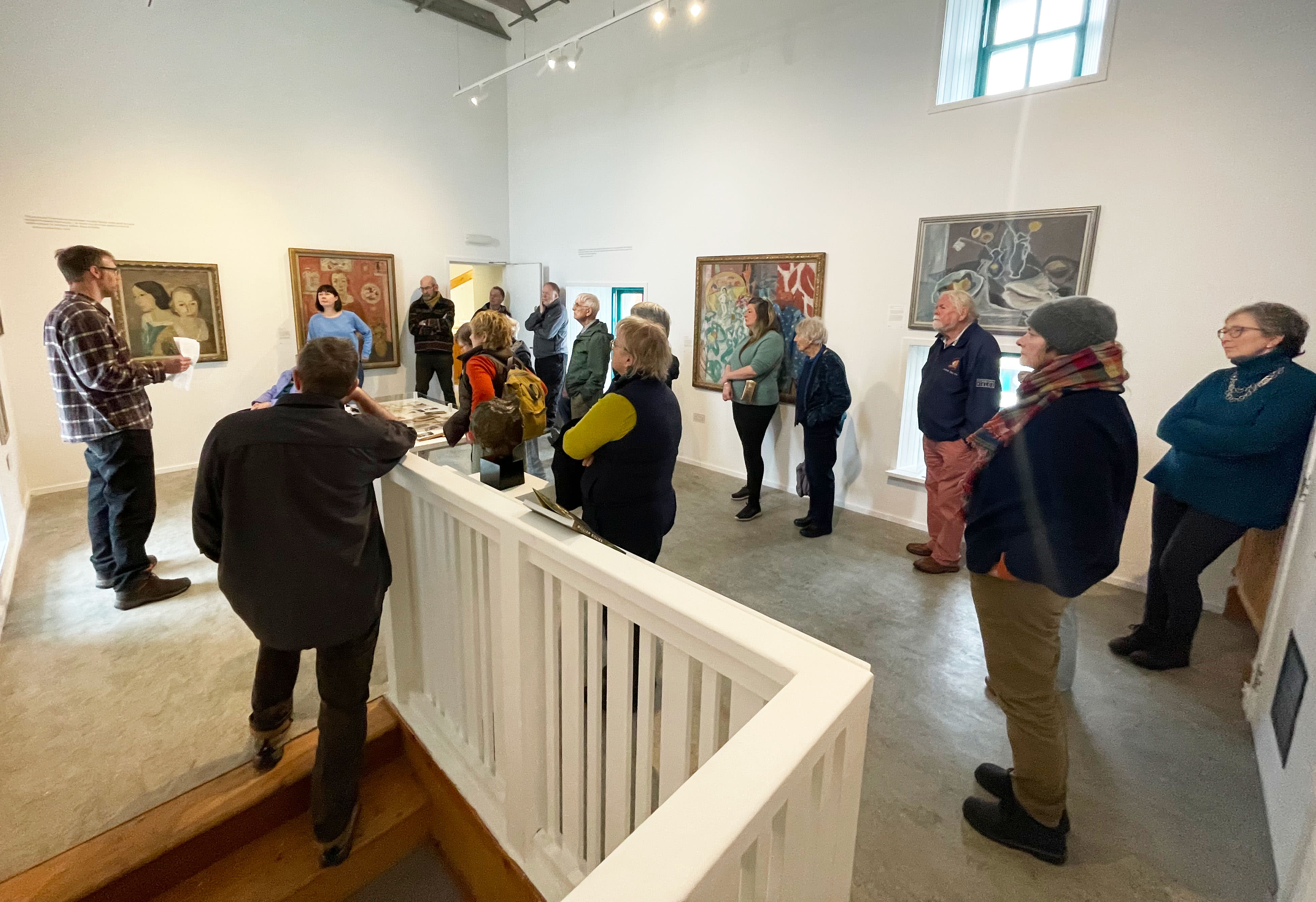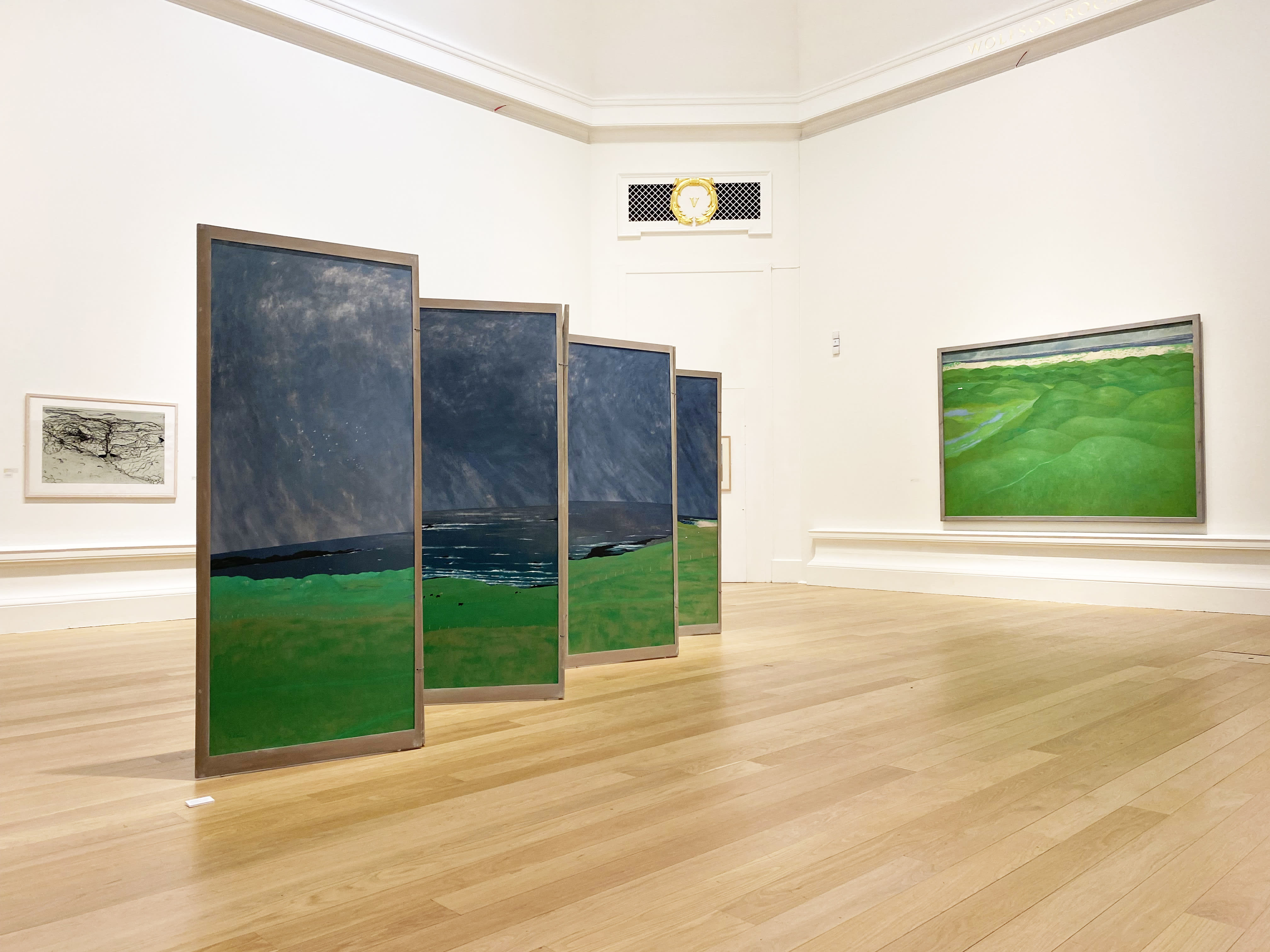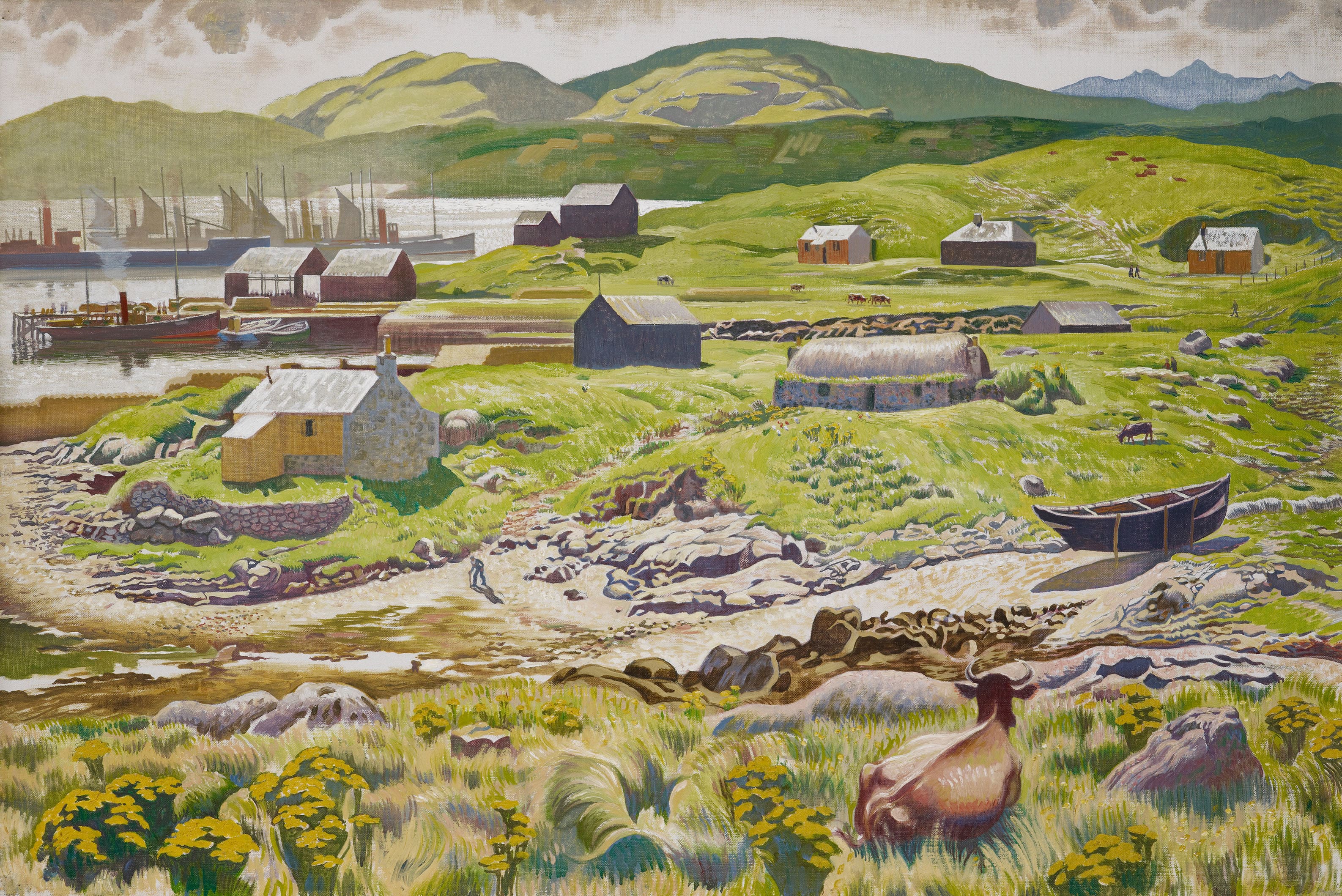
Our touring exhibition William Gillies: Modernism and Nation recently opened at Taigh Chearsabhagh Museum and Arts Centre in Lochmaddy, North Uist. This is the first time the RSA has toured an exhibition to North Uist, and it brought to mind some other works in our Collection that were inspired by the remote beauty of the Western Isles.
William Gillies: Modernism and Nation at Taigh Chearsabhagh
We are of course familiar with Frances Walker RSA, whose practice has been heavily influenced by the spectacular remote wildernesses of Scotland. After leaving Edinburgh College of Art in 1953, she applied for a job as the only art teacher on Harris and North Uist.
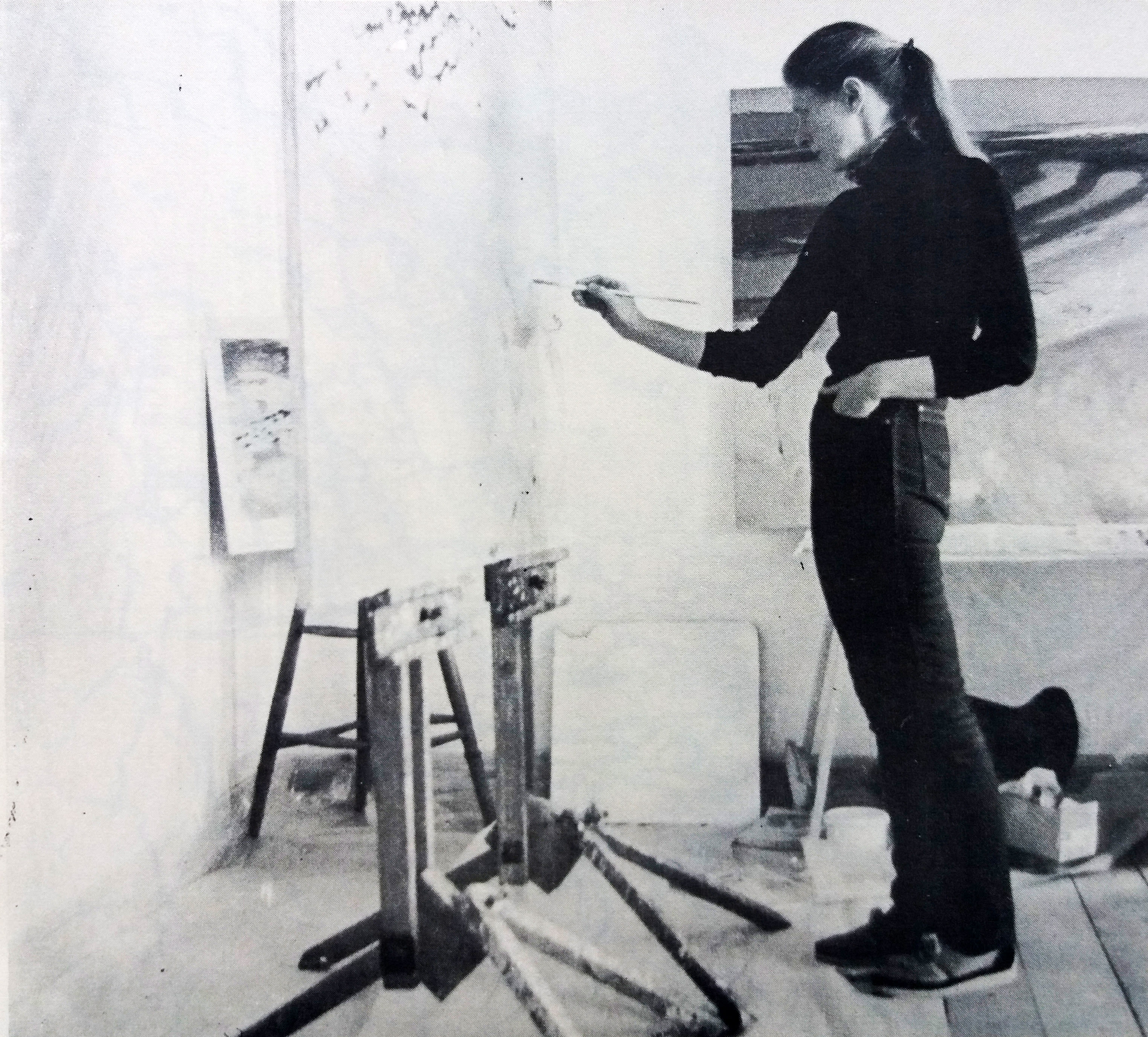
Frances Walker RSA in her studio
Walker spent half the year on each island, travelling between schools on buses, tractors, delivery vans and occasionally on horseback. This experience formed the origins of her love for wilderness, and she would continue to draw and paint all over the Western Isles until 1979 when she purchased a traditional thatched cottage in Tiree, to which she would return every year.
Frances Walker RSA, Atlantic Watch
In 2018 and 2021, Walker gifted the RSA her spectacular folding screen works Atlantic Watch and Machair Walk. The form of these screens is practical as well as spatially aesthetic – they were designed to fit together from individual screens that would fit out the door of her studio flat in Aberdeen.
Atlantic Watch presents a panorama view out from Tiree across the wide horizons of the Atlantic, while Machair Walk is a view across the machair of South Uist on a brilliant day in early summer. Together they create a wonderful physical evocation of Walker’s time in the Hebrides. The seasons in the Western Isles are something to behold and in Walker’s gift to the RSA of her design for our 1994 Christmas card, Snow Squalls over Tiree showed the difference to be felt in a Tiree winter.

Frances Walker RSA, Snow Squalls over Tiree
Some thirty years before Walker discovered the Western Isles, the artist Douglas Percy Bliss visited the Isle of Barra. In 1926 he had secured an exhibition of his watercolours in London and wanted a new place to paint. His friend, the painter John Duncan RSA, persuaded him to visit Barra for its white sands and green sunsets. Captivated by the landscape, Bliss returned for subsequent visits and made a series of paintings and wood engravings, of which In the Western Isles in the RSA Collection is a fine example.
Douglas Percy Bliss, In the Western Isles
It was purchased by the RSA from the 1936 Annual Exhibition, and depicts a scene which is likely at the island’s capital of Castlebay. It’s a fascinating topographical narrative of a summer’s day on the island, where with a highland cow, we take in the view of humanity’s presence and activity in the Hebridean wilderness. Prominent is a thatched cottage, akin to that purchased by Walker in Tiree.
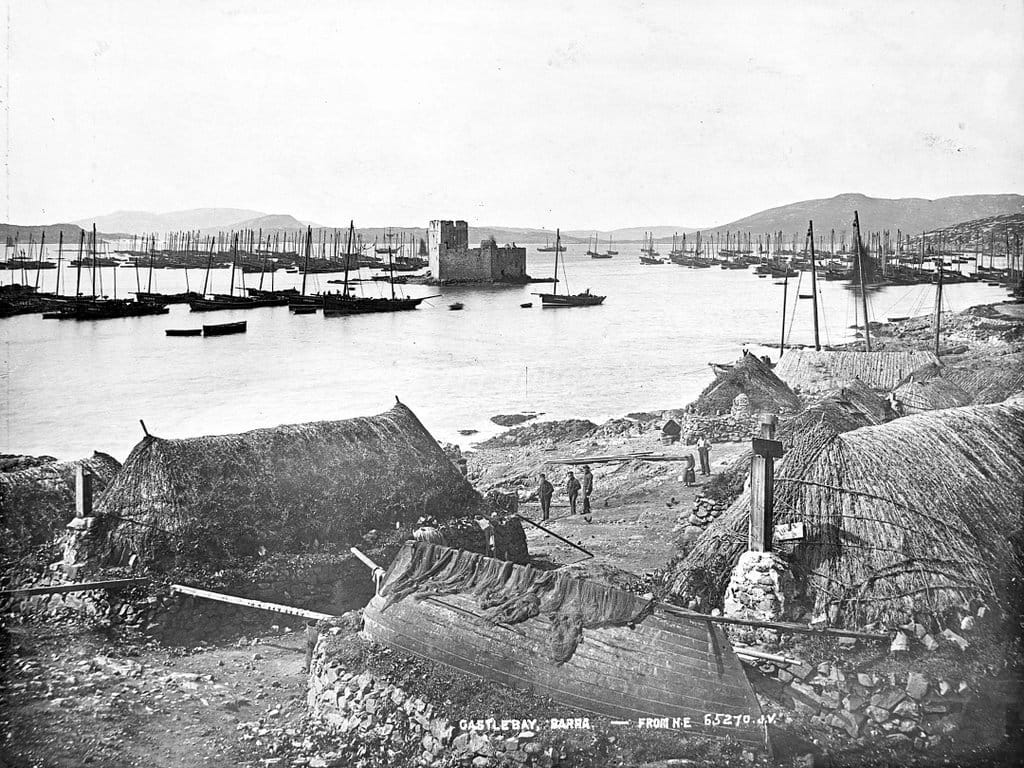
Castlebay, Barra
In 1956, Bliss wrote emotionally in The Scotsman of his experience in ‘Barra Thirty Years Ago’, and what he remembers might have been read by a young Frances Walker during her early years in the Western Isles:
‘In the early summer, when the weather is kind, the islands of the Hebrides take on a dream-like beauty. All the rain that falls there brings out the colour in the vegetation. The white sand, the purple seaweeds, the emerald sea, the grey rocks, the many-hued mosses grasses and flowers enchant the eye. Alpine valleys have the same or a greater brilliance of colour, and they add the intense blue of the sky and the dazzling white of mountain summits. But the beauty of these Hebridean places is not one of scale or contrast but of atmosphere. The sea is never far off. The sea with its haunting music and its mists and its pervasive sadness, is the decisive factor in the Hebridean landscape. The sea is to the Hebrides what the eternal snows are to mountain scenery – they give it an extra dimension.’
William Gillies: Modernism and Nation is on view at Taigh Chearsabhagh Museum and Arts Centre in Lochmaddy, North Uist until Sunday 13 July 2025.
